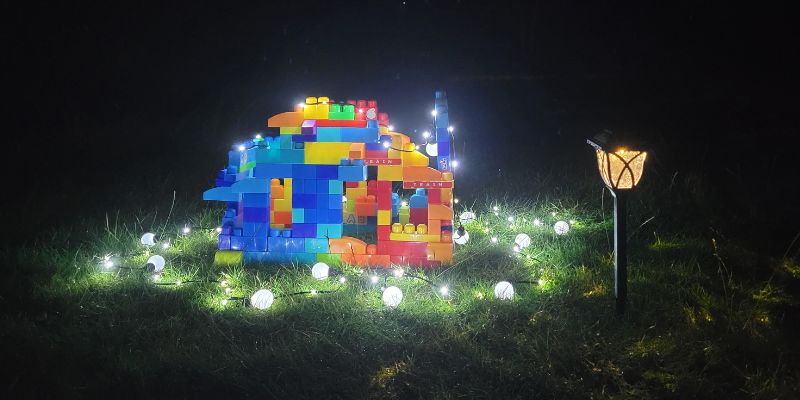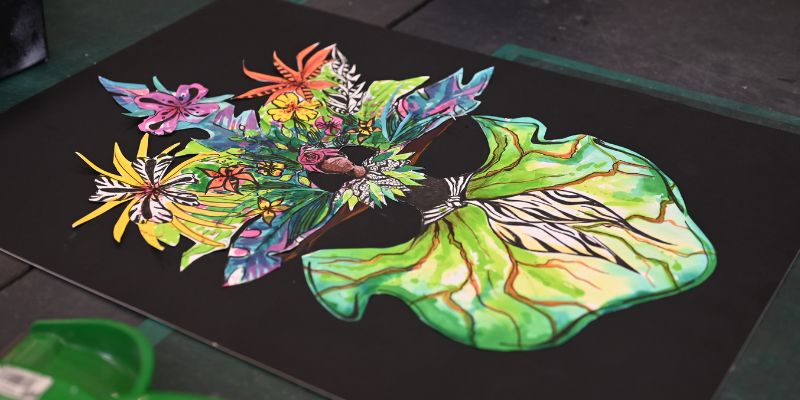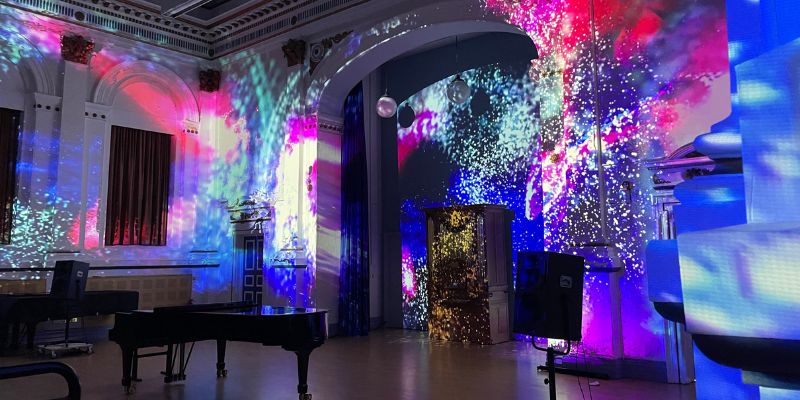
Music, magic and mind-bending research are transforming the University of Leeds campus for its most ambitious contribution to Light Night yet.
Curious minds can enjoy sensory installations and activities inspired by research, as the University Zone at Light Night Leeds returns on 22-23 October from 6pm.
Wieke Eringa, Director of the Cultural Institute at Leeds, said: “We’re inviting families and people of all ages to campus for this year’s Light Night Leeds, where they can open doors to fairy houses telling stories of migration, enjoy beatboxing, choir, piano and percussion performances, and watch a majestic carnival procession with mechanically engineered costumes.
“Researchers, students and alumni have collaborated with artists and organisations across Leeds to create a magical world with quieter, indoor and less crowded spaces away from the hustle and bustle of the city centre.
“Glowing butterflies, giant neurones, peacock lanterns and hopping bunnies are just a few of the dazzling and thought-provoking exhibits you will find on campus.”
After welcoming more than 13,000 visitors to campus for 2024’s Light Night Leeds, this year’s programme marks the launch of Open Up – an exciting new box office site that makes it easier for the public to discover, book and enjoy cultural events at the University. The full University Zone programme is available at openup.leeds.ac.uk.
Banyan

Dancers of all ages from local troupe RJC Dance have been decked out in costumes designed by Rhian Kempadoo-Millar of Mango Arts, in collaboration with the Faculty of Engineering and Physical Sciences, for a spectacular carnival procession titled Banyan after the mighty tree.
Carnival is deeply rooted – it carries the strength, resilience and stories of a community across generations, just like nature. We wanted to reflect on this connectedness in our collaboration when creating the costumes.
Briony Thomas, Professor of Applied Creativity in the School of Mechanical Engineering and project lead, said: “Our work for Banyan was inspired by the interconnectedness of everything in nature. Beyond the roots of the banyan tree, mycelium, a root-like structure of fungi, form extensive underground networks connecting trees and plants. That’s where the name for the largest costume, ‘Mama Mycelium’, comes from.
“Carnival is deeply rooted – it carries the strength, resilience and stories of a community across generations, just like nature. We wanted to reflect on this connectedness in our collaboration when creating the costumes.”
The technical team in engineering used state-of-the-art laser cutting equipment to create intricate components that would have been impossible for the Mango Arts team to make by hand, such as beautiful biodegradable feathers from recycled paper and card. 3D printing has been used to create bespoke units to secure the lighting, designed and programmed by the technical team.
Contributing to more than 60 carnival costumes, the collaboration has also focused on sustainability and durability by repurposing materials from last year’s costumes. They have also made sure core elements such as headpieces are robust enough to be reused in years to come, with the University team creating bespoke vacuum-formed bases.
Families attending Light Night Leeds can also get involved in creating their own headdresses with reused 3D gems from last year’s Carnival costumes by picking up a maker kit at the Be Curious pop-up at the Riley Smith Theatre.
The team is also experimenting with ultraviolet dyes and pigments this year, to reflect elements of nature that glow in the dark. The Banyan procession takes place every hour from 7pm on the University precinct, with the dance element taking place at the Sign for Art sculpture.
Harmonia

Leeds alum Ilan Eshkeri (Music & English, 1999), a BAFTA and Ivor Novello-nominated composer known for Stardust, Layer Cake and The Young Victoria, has joined forces with projection artist Paul Miller and a live choir to create Harmonia.
They use live choral sound, music and a dramatic projection to explore the cyclical, and fragile nature of life on earth.
In an interview with Leeds’ alumni magazine, Mr Eshkeri said: “I don’t want to give too much away, but it’s going to be a really immersive experience, and quite an extraordinary sensory journey. There’s a huge amount of work going into it.”
Programme highlights
As part of the programme, guests can learn about endangered wildlife, celebrate Diwali with peacock lanterns and listen to classical Carnatic singing.
Disrupting the Brotherton Library’s everyday hush are record-breaking beatboxer Testament and pianist Nica Ticciati in ‘Whisper and the Piano’, a musical storytelling performance in collaboration with the Leeds International Piano Competition.
At the future home of the National Poetry Centre, Trinity St David’s Church, the words of the regional Young Poet Laureates will be brought to life with light and sound. It is part of the Young Poet Laureate programme, backed by Poet Laureate and Professor of Poetry Simon Armitage, West Yorkshire Mayor Tracy Brabin, and the National Literacy Trust.
A projection inspired by Kashmiri textiles from Cultural Collections and Galleries will light up the Laidlaw Library, while other pieces combine light and sound to explore climate change and the power of water.
It’s fantastic to team up with partners like the University of Leeds to bring these compelling creations to Leeds
Be Curious, the University’s annual family open day, is also popping up for the event, allowing visitors to interact with the research behind the creative installations.
Light Night Leeds’ annual showcase of the city’s creativity is organised and supported by Leeds City Council and funded by Arts Council England National Lottery Project Grants and sponsors from the city. This year’s theme, which is Landmarks, celebrates historic civic buildings, modern architecture and public spaces.
Salma Arif, Leeds City Council’s executive member for adult social care, active lifestyles and culture, said: “Light Night is always the most spectacular occasion in the city’s cultural calendar and each and every year, the city is transformed by beautiful artworks created by ingenious artists from around the world.
“It’s fantastic to team up with partners like the University of Leeds to bring these compelling creations to Leeds and for thousands of people to have the chance to see some of the city’s most recognisable and much-loved locations in a completely new light.”
Further information
Top image: New Home Makers by Joyce Nga Yu Lee. All images courtesy of the Cultural Institute at the University of Leeds.
The full programme of the University Zone is available at openup.leeds.ac.uk.
For media enquiries, please contact University of Leeds press officer Mia Saunders by email on m.saunders@leeds.ac.uk